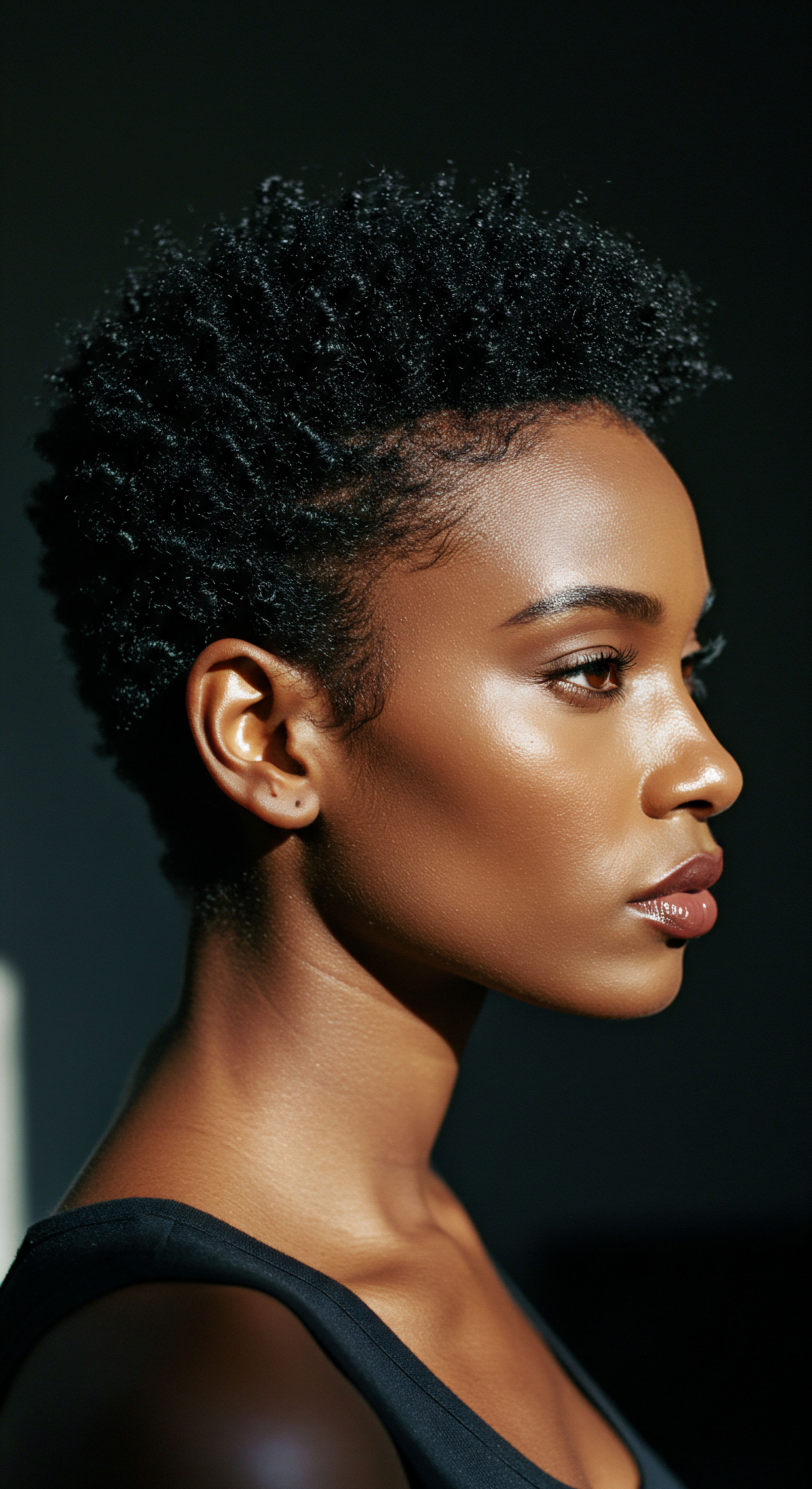
Fundamentals
Within the serene landscape of textured hair care, understanding the true meaning of Hair Shedding Prevention begins with a gentle unraveling of common perceptions. Many often confuse the natural rhythm of hair release with breakage, yet these are distinct occurrences, each telling a different story about our strands. Hair shedding, in its simplest interpretation, signifies a hair strand completing its natural life cycle, detaching from the scalp with a tiny, often translucent, bulb at its root.
This is a physiological process, a continuous renewal that ensures healthy hair growth. A healthy individual typically experiences the release of 50 to 100 hair strands each day, a testament to the ongoing cycle of life within our follicles.
Conversely, hair breakage speaks to a different reality entirely. This happens when the hair shaft fractures along its length, lacking the tell-tale bulb at the root. Breakage often signals a compromise in the hair’s structural integrity, a result of external stressors or internal imbalances.
For those with textured hair, particularly within Black and mixed-race communities, distinguishing between these two phenomena holds particular significance. The unique coiled architecture of these hair types can make them more susceptible to mechanical stress, leading to perceived thinning that is often, in fact, breakage rather than true shedding.
Hair shedding marks a natural cycle of renewal, while breakage signals damage to the hair’s structural integrity.
Preventing excessive hair shedding, therefore, moves beyond merely catching falling strands; it involves nurturing the scalp and hair to support the healthy progression of the hair growth cycle. It encompasses practices that minimize undue stress on the hair shaft, allowing each strand to fulfill its natural lifespan without premature fracture. This fundamental understanding lays the groundwork for a mindful approach to textured hair care, honoring its delicate nature and celebrating its inherent strength.
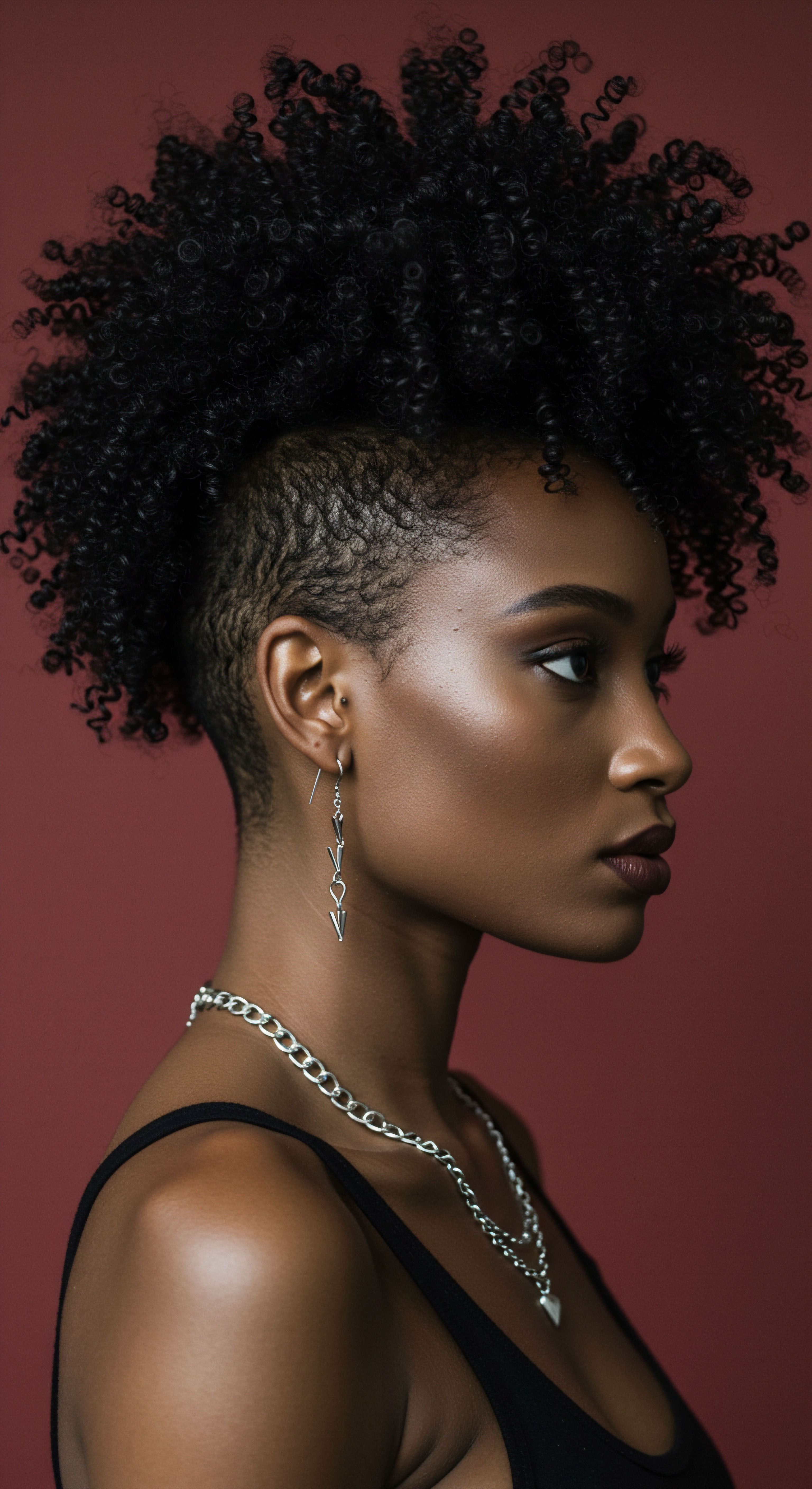
The Hair’s Natural Rhythm ❉ A Deeper Look
Our hair lives through a fascinating, asynchronous cycle, ensuring we never experience a collective moment of baldness. Each follicle operates independently, cycling through three primary phases.
- Anagen Phase ❉ This active growth period, lasting from two to seven years, sees cells in the hair bulb dividing rapidly, pushing the hair shaft upwards. Around 85% of our hair resides in this stage at any given moment.
- Catagen Phase ❉ A brief transitional period, typically spanning two to three weeks, marks the end of active growth. The hair follicle shrinks, and the hair detaches from its blood supply.
- Telogen Phase ❉ This resting stage lasts about three months, during which the hair is fully formed but inactive. Towards the conclusion of this phase, the old hair is released, making way for a new anagen hair to emerge from the same follicle. Approximately 10% of our hair is in this resting phase.
When we speak of Hair Shedding Prevention, we are primarily concerned with maintaining the optimal duration of the anagen phase and ensuring the telogen phase concludes gently, without external forces causing premature release or breakage.

Initial Steps for Mindful Hair Care
For individuals beginning their exploration of textured hair health, some initial steps can significantly contribute to reducing unwanted hair release. These practices center on gentle handling and fostering a supportive environment for the scalp.
| Practice Area Detangling |
| Fundamental Recommendation Always detangle textured hair gently when wet, using a wide-tooth comb or fingers, starting from the ends and working upwards. This approach minimizes snagging and tearing. |
| Practice Area Washing |
| Fundamental Recommendation Cleanse the scalp regularly to remove buildup, but avoid harsh scrubbing. Focus shampoo on the scalp and allow the rinse to cleanse the lengths. |
| Practice Area Conditioning |
| Fundamental Recommendation Apply a generous amount of conditioner to hydrate and provide slip, aiding in detangling and reducing friction. |
| Practice Area Styling |
| Fundamental Recommendation Choose styles that minimize tension on the scalp and hair strands. Loose braids, twists, or puffs are often preferred over tight, pulled-back styles. |
| Practice Area These foundational habits lay the groundwork for healthier hair cycles. |
Cultivating an awareness of how our daily routines influence the hair’s well-being is the initial stride toward truly understanding and practicing Hair Shedding Prevention. It begins with respect for the hair’s inherent structure and a commitment to nurturing its vitality.
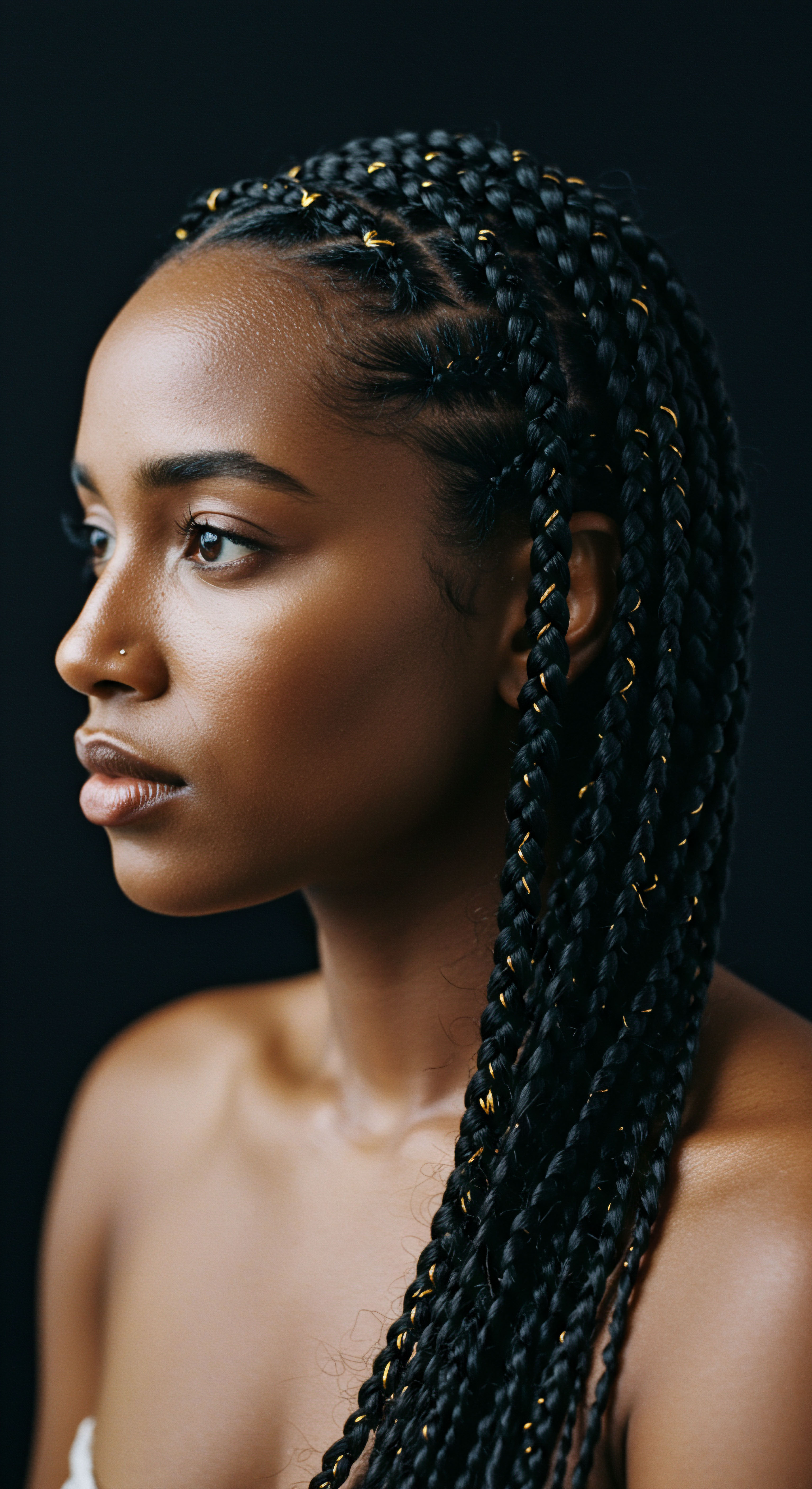
Intermediate
Stepping beyond the foundational concepts, the intermediate understanding of Hair Shedding Prevention deepens our comprehension of its practical applications and contextual nuances, especially within the vibrant sphere of textured hair. Here, the focus shifts from simply identifying shedding versus breakage to dissecting the common stressors that precipitate these concerns and adopting more refined care rituals. This interpretation acknowledges that for Black and mixed-race hair, the journey of hair care is often intertwined with historical legacies and unique physiological considerations.
The significance of managing hair shedding for textured strands extends beyond aesthetics; it connects directly to maintaining density, promoting healthy growth, and preserving the hair’s innate resilience. Understanding the mechanics of how different styling practices, product choices, and environmental factors influence the hair shaft’s integrity becomes paramount. It requires a more discerning eye for the signs of distress and a proactive approach to mitigating potential harm.
Intermediate understanding of shedding prevention for textured hair involves recognizing specific stressors and refining care rituals.
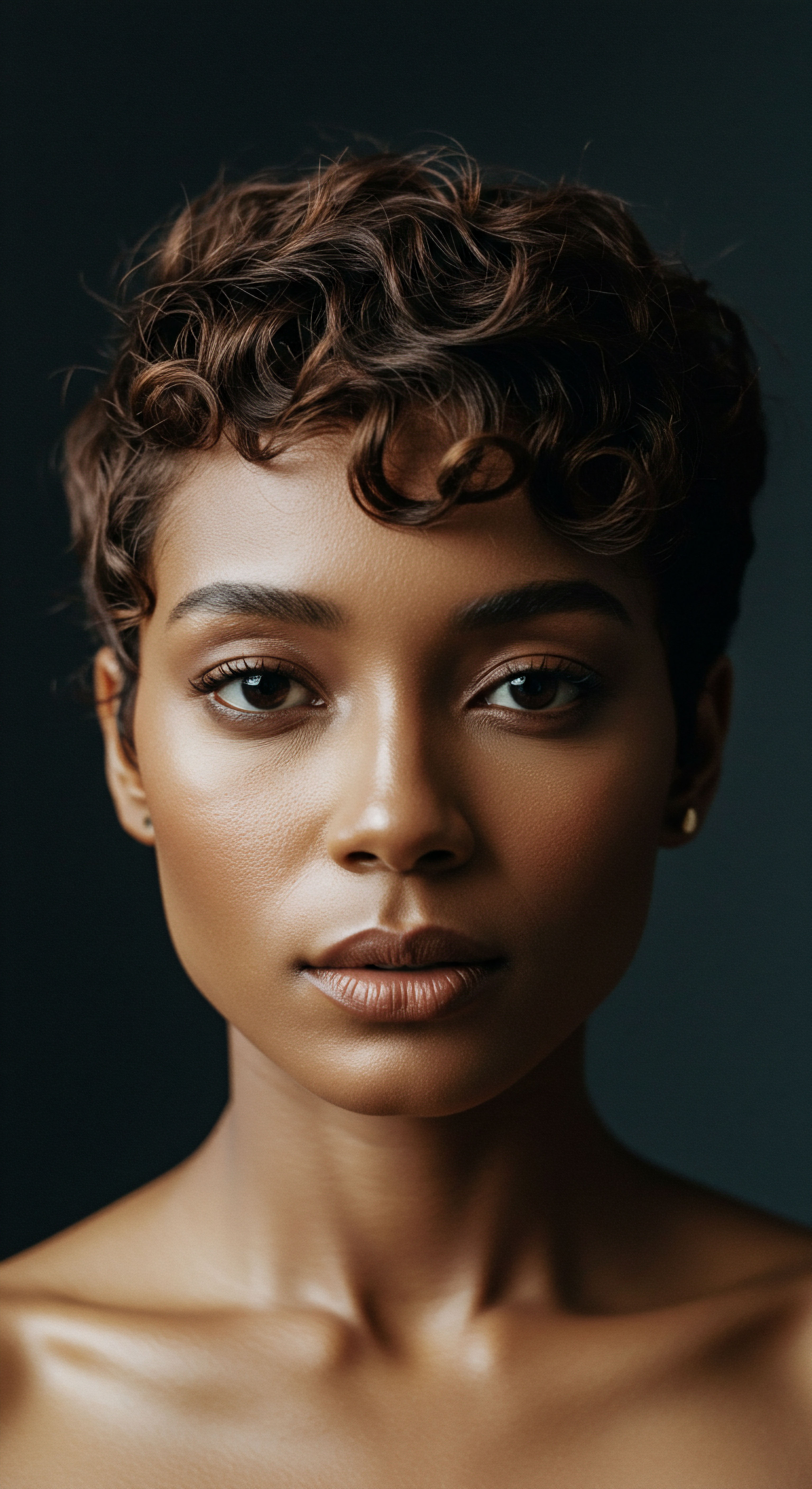
Unpacking Common Contributors to Hair Distress
For many with textured hair, what appears to be excessive shedding is frequently a manifestation of mechanical or chemical damage, leading to breakage that mimics true hair release. This misinterpretation can lead to ineffective interventions.
- Tension from Styling ❉ Often celebrated as “protective,” styles like tight braids, cornrows, weaves, and dreadlocks, when installed with excessive tension, can place undue strain on the hair follicles. This continuous pulling can lead to a condition known as Traction Alopecia. Research indicates a significant prevalence of traction alopecia among women of African descent; studies report rates as high as 31.7% in adult African women and affect up to one-third of women of African descent. This condition, if unaddressed, can result in permanent hair loss in affected areas.
- Chemical Processing ❉ The historical desire for straightened hair, often driven by societal pressures, led to widespread use of chemical relaxers. These potent formulations, typically containing sodium hydroxide or guanidine hydroxide, chemically alter the hair’s protein structure. Investigations have revealed that all tested relaxers, even those marketed as “no-lye” or suitable for children, possess dangerously high pH levels, exceeding 11.5, which is considered corrosive to the skin. Such treatments can severely compromise the hair shaft, leading to dryness, brittleness, and substantial breakage, often accounting for a significant portion of reported hair loss, ranging from 53.3% to 69.2% in some studies.
- Heat Application ❉ The application of high heat from styling tools like flat irons and blow dryers can strip the hair of its natural moisture, weakening the cuticle and making the hair shaft prone to fracture. The damage accumulates over time, manifesting as brittle strands and increased breakage.
- Inadequate Moisture ❉ Textured hair, due to its coiled structure, can make it challenging for natural scalp oils to travel down the hair shaft, leading to inherent dryness. Without sufficient external moisture and proper sealing, the hair becomes more rigid and susceptible to mechanical breakage during manipulation.
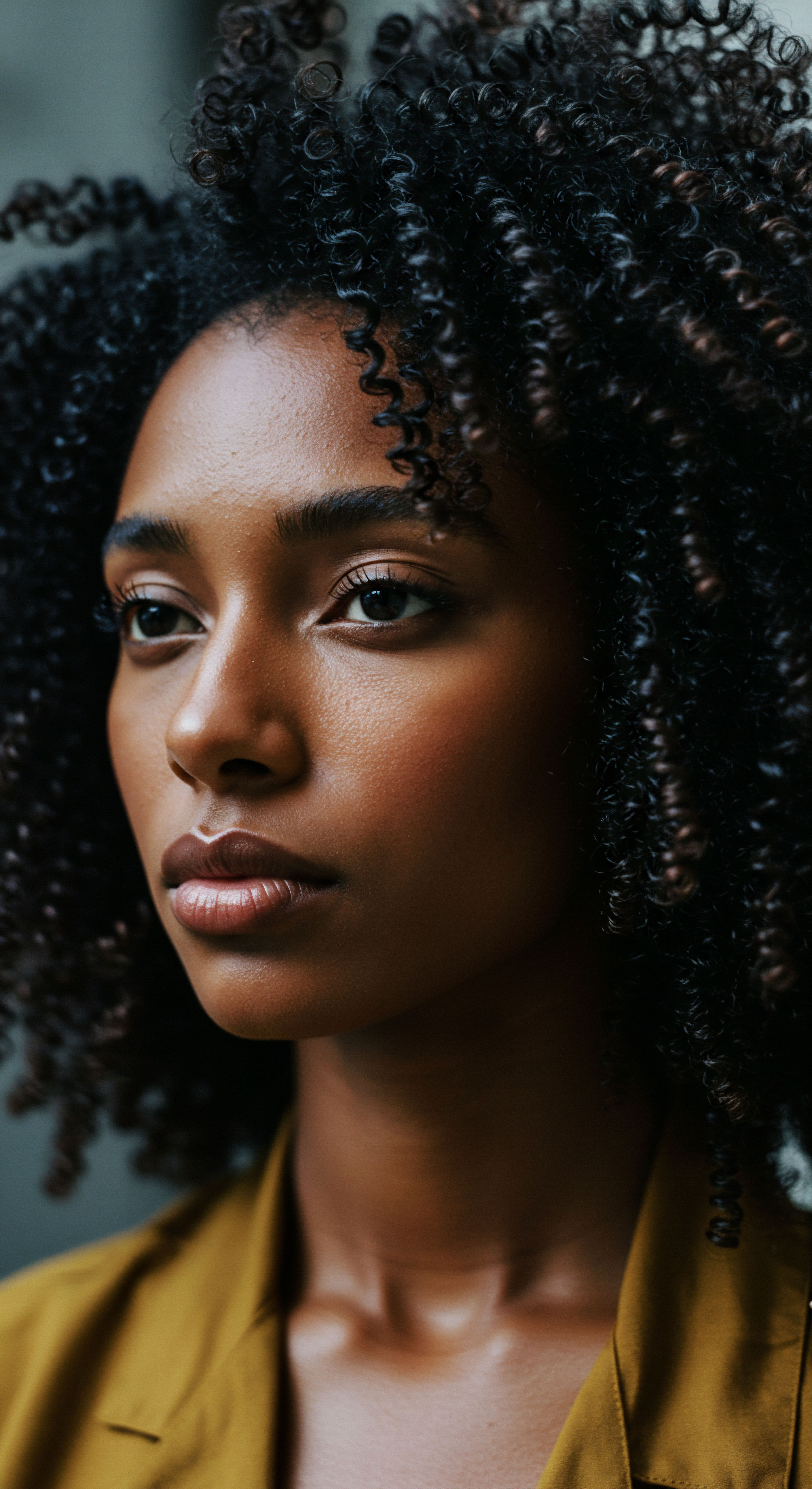
Refining Your Hair Care Philosophy
An intermediate approach to Hair Shedding Prevention involves moving beyond superficial fixes to cultivate practices that truly honor the hair’s delicate balance.
- Mindful Detangling ❉ Always begin detangling with a conditioning agent, using your fingers or a wide-tooth comb. Sectioning the hair before detangling allows for a more controlled and gentle process, minimizing unnecessary tension.
- Strategic Cleansing ❉ Regular, yet gentle, cleansing is essential to maintain scalp health without stripping the hair. Opt for sulfate-free shampoos and co-washes to preserve natural moisture.
- Deep Conditioning Rituals ❉ Incorporate regular deep conditioning treatments, perhaps weekly or bi-weekly, to replenish moisture and strengthen the hair. Consider incorporating steam treatments to aid in product penetration.
- Protective Styling with Awareness ❉ While styles like braids and twists can indeed protect the hair from daily manipulation, their installation must be tension-free. Ensure the scalp is not pulled tightly, and avoid adding excessive weight with extensions. Regularly check for signs of scalp irritation or thinning around the hairline.
- Understanding Your Hair’s Porosity ❉ Hair porosity, or its ability to absorb and retain moisture, greatly influences product effectiveness. High porosity hair, with its open cuticles, might benefit from heavier butters and oils to seal in moisture, while low porosity hair might prefer lighter, more penetrating liquids.
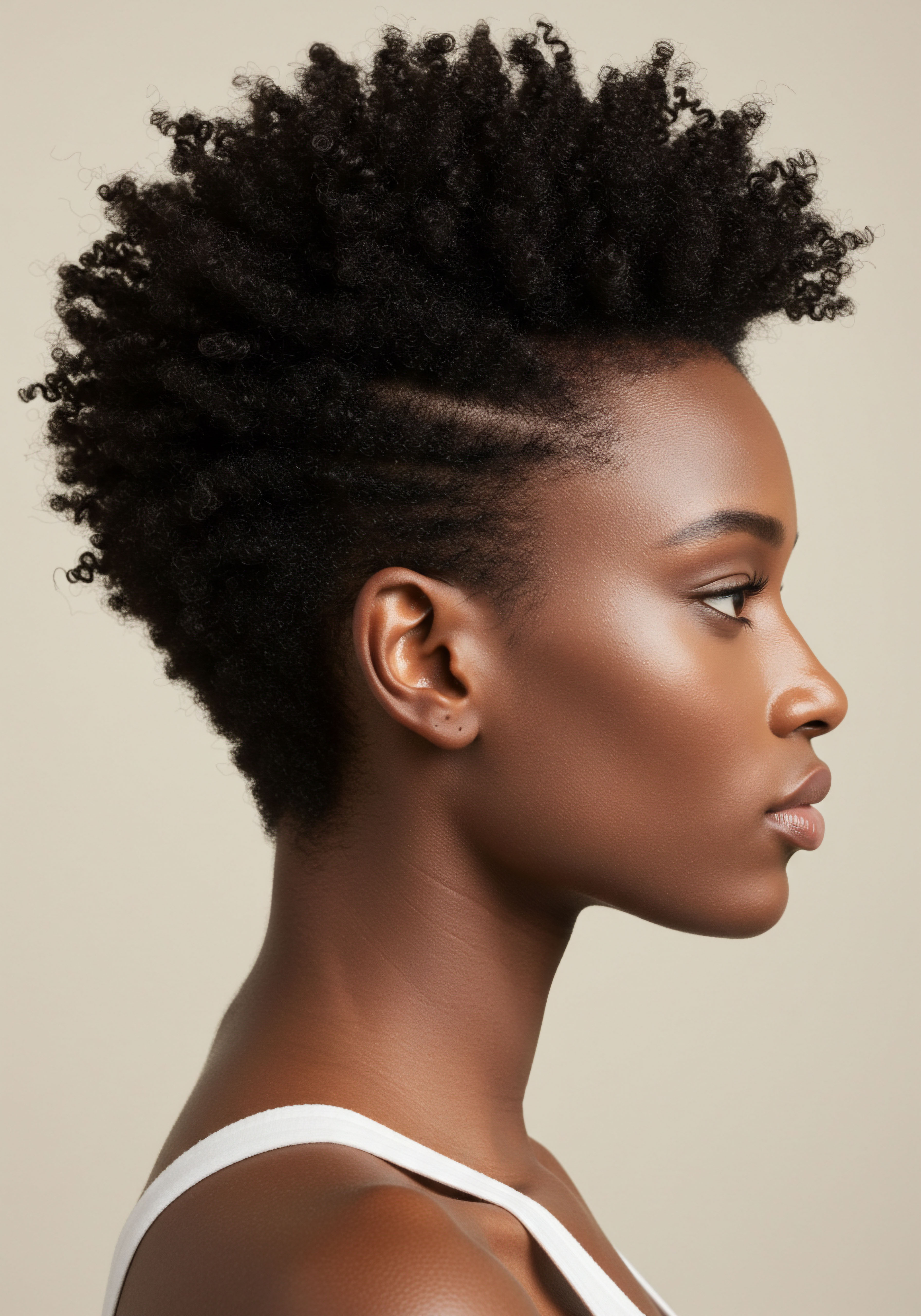
The Impact of Product Choices
The products we choose play a pivotal role in Hair Shedding Prevention. It is not merely about what is advertised, but what genuinely supports the hair’s health.
| Product Category Shampoos |
| Impact on Hair Shedding Prevention Sulfate-free options preserve natural oils, preventing excessive dryness and subsequent breakage. Clarifying shampoos should be used sparingly to remove buildup without over-stripping. |
| Product Category Conditioners |
| Impact on Hair Shedding Prevention Formulations rich in emollients and humectants enhance moisture retention, reducing friction during detangling and improving hair elasticity. |
| Product Category Leave-in Treatments |
| Impact on Hair Shedding Prevention Provide continuous hydration and a protective layer against environmental stressors, helping to maintain the hair's integrity throughout the day. |
| Product Category Styling Gels/Creams |
| Impact on Hair Shedding Prevention Opt for products that offer hold without stiffness or flaking, as rigid casts can make hair more prone to breakage upon manipulation. |
| Product Category Selecting products that align with your hair's specific needs supports its strength and longevity. |
By integrating these intermediate insights and adapting care routines, individuals can significantly mitigate perceived shedding and breakage, fostering a healthier, more vibrant hair journey. This thoughtful engagement with hair care transforms routine into ritual, supporting the longevity of each strand.

Advanced
The advanced explication of Hair Shedding Prevention transcends rudimentary distinctions, delving into the intricate biological, cultural, and psychosocial dimensions that shape the vitality and retention of textured hair. This interpretation is not merely a definition; it is a profound analysis, a nuanced understanding of hair’s complex interplay with its environment, its historical burdens, and its inherent resilience. From an expert perspective, Hair Shedding Prevention for textured, Black, and mixed-race hair signifies a comprehensive, proactive strategy aimed at optimizing follicular health, minimizing structural degradation, and countering systemic pressures that historically compromise hair integrity and length retention. It involves a deep methodological analysis of factors that impact hair at a cellular level, alongside an emotionally intelligent recognition of the lived experiences within the community.
The significance of this concept is multi-layered, extending into the realms of trichological science, dermatological practice, and cultural advocacy. It demands an appreciation for the unique morphology of highly coiled hair, which, despite its apparent robustness, possesses specific vulnerabilities that necessitate tailored approaches. The long-term consequences of neglecting genuine shedding prevention are not simply aesthetic; they contribute to chronic conditions, psychological distress, and a perpetuation of cycles of damage that can undermine confidence and well-being. Success in this domain relies upon an expert-driven insight, even if that insight challenges widely held beliefs.
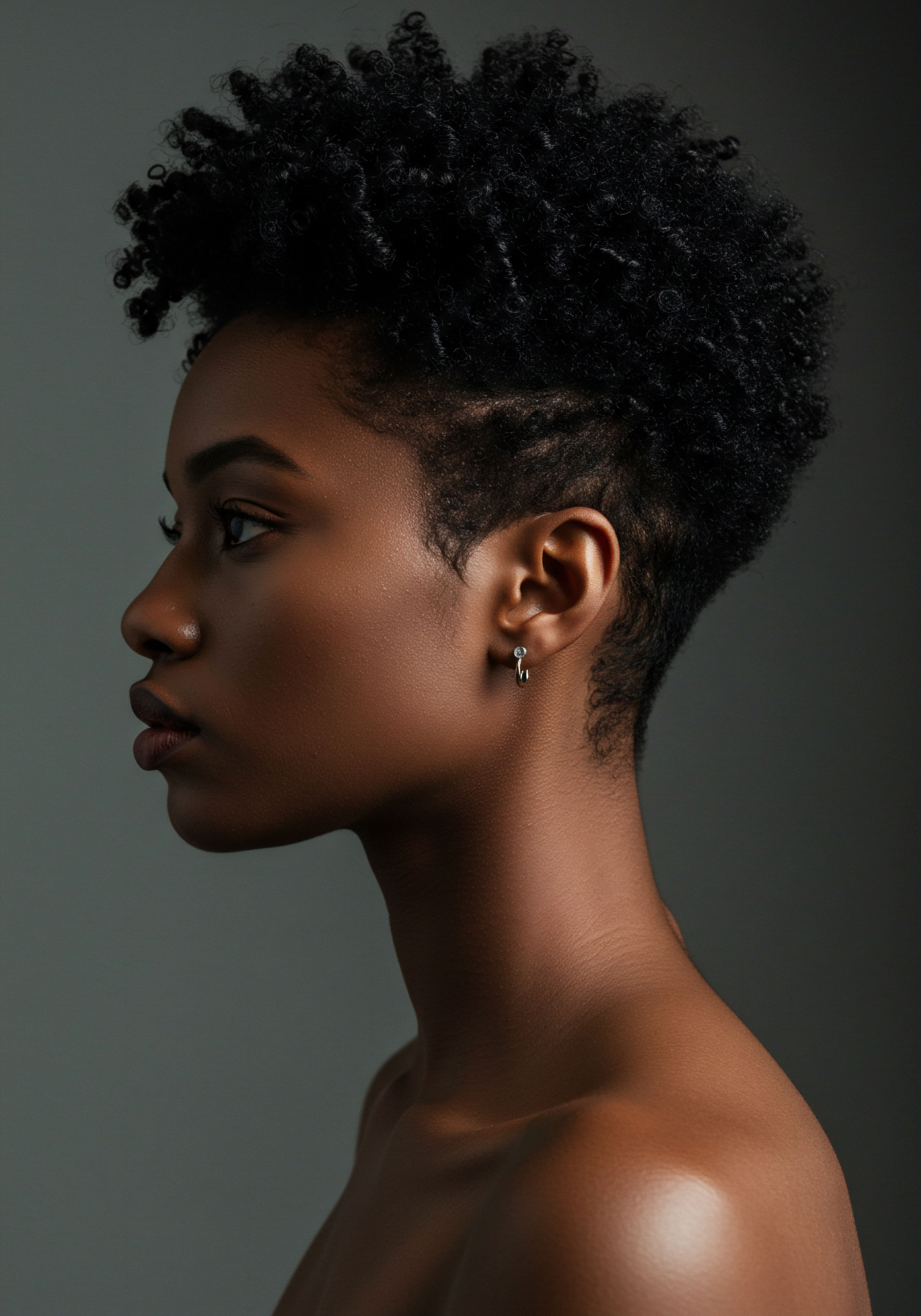
The Biomechanical and Biochemical Imperatives of Retention
The spiral nature of textured hair, with its elliptical cross-section and uneven cuticle layers, renders it biomechanically distinct and often more fragile than straighter hair types. This unique structure means natural oils struggle to traverse the entire length of the hair shaft, contributing to inherent dryness and increased susceptibility to breakage.
At a microscopic level, the integrity of the hair shaft relies on its disulfide bonds and the cohesive forces within its protein matrix. Chemical processes, particularly the use of hair relaxers, fundamentally disrupt these bonds. Studies confirm that relaxers, even those without lye, possess high pH values (often above 11.5), making them corrosive.
This chemical assault leads to significant protein loss and irreversible damage to the cuticle and cortex, profoundly weakening the hair and making it highly susceptible to mechanical stress. The repeated application of such chemicals, a practice historically tied to Eurocentric beauty standards, perpetuates a cycle of damage that is a primary driver of perceived shedding and chronic hair fragility in Black women.
Hair shedding prevention for textured hair is a comprehensive strategy addressing unique biomechanics, historical impacts, and psychological factors.
Furthermore, the persistent tension exerted by certain styling practices, often mislabeled as universally “protective,” precipitates a distinct form of hair loss ❉ Traction Alopecia (TA). While braids and extensions can shield hair from daily manipulation, their tight installation or excessive weight induces chronic inflammation around the hair follicle. This sustained micro-trauma can lead to perifollicular erythema, folliculitis, and, ultimately, follicular miniaturization and scarring, resulting in irreversible hair loss.
The prevalence of TA is notably high in communities with a history of such styling, affecting a significant portion of women of African descent. This condition underscores a critical, often overlooked, aspect of hair shedding prevention ❉ the necessity of discerning genuine protective practices from those that inadvertently inflict long-term damage.
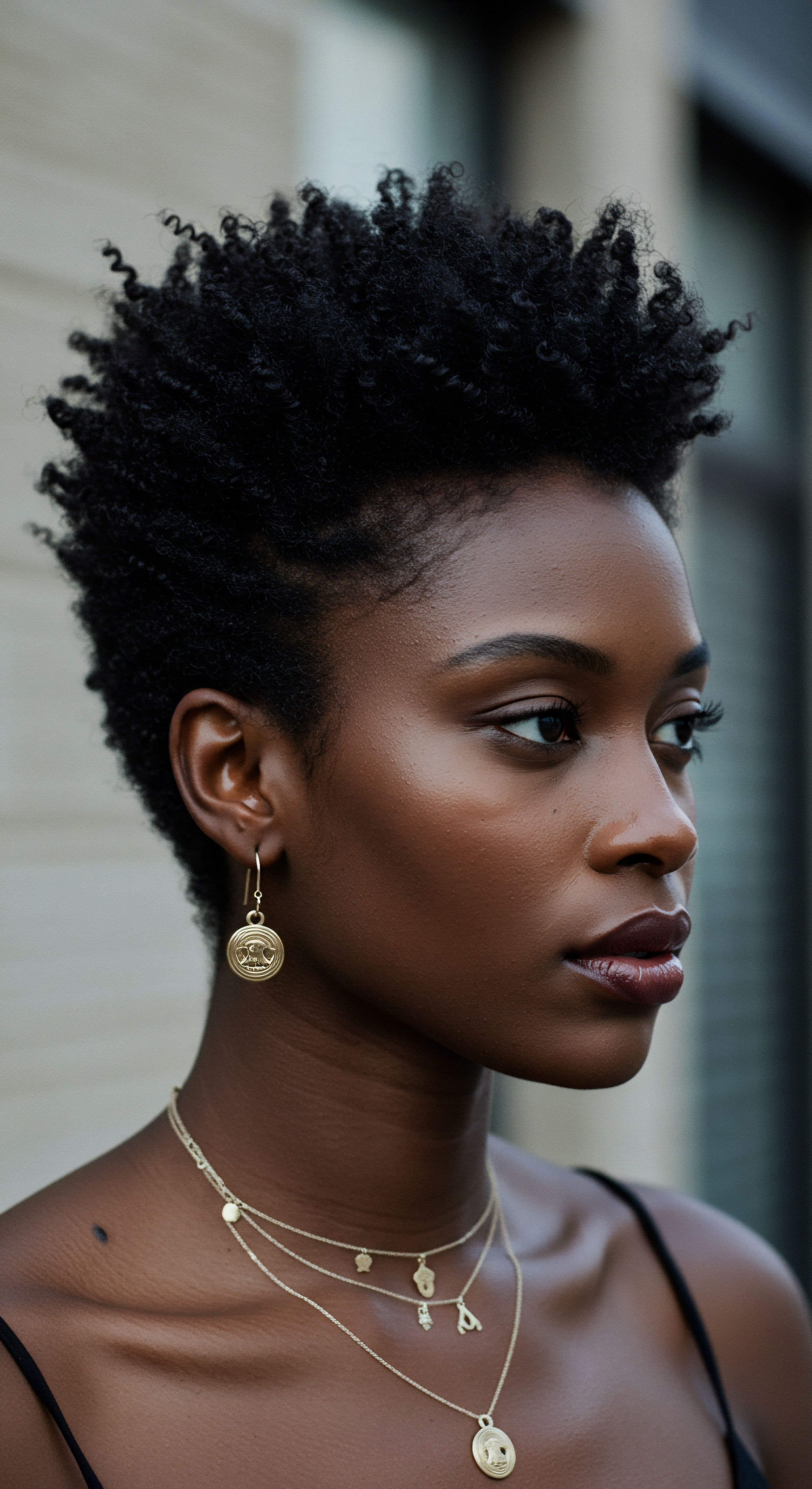
Psychosocial and Cultural Dimensions of Hair Retention
The discussion of Hair Shedding Prevention for textured hair would be incomplete without acknowledging the profound psychosocial and cultural forces at play. For centuries, Black hair has served as a potent symbol of identity, resistance, and beauty, yet it has also been a battleground for systemic discrimination and imposed aesthetic norms. The historical pressure to conform to straightened hair textures, originating from periods of enslavement and persisting through modern workplace biases, has often led individuals to adopt styling practices that, while socially acceptable, are physically detrimental to hair health.
The desire for “manageability” or “neatness” frequently translated into the use of harsh chemicals and tight styles, inadvertently contributing to breakage and thinning that were then misinterpreted as natural shedding or “bad hair.” This societal conditioning created a disconnect between hair health and perceived beauty. An advanced understanding of Hair Shedding Prevention necessitates decolonizing hair care practices, encouraging individuals to celebrate their natural textures, and prioritizing the biological integrity of the hair over external pressures. It requires a critical examination of beauty standards and an advocacy for hair practices that genuinely support the unique needs of coiled strands.

Strategic Interventions and Long-Term Insights
From an advanced perspective, effective Hair Shedding Prevention is a strategic, multi-pronged intervention.
| Strategic Pillar Follicular Optimization |
| Core Insights for Textured Hair Focus on scalp microbiome balance and nutrient delivery to the hair bulb. Consider topical treatments like minoxidil, which can prolong the anagen phase and improve the anagen-to-telogen ratio. Recognize that a healthy scalp is the foundation for robust hair growth. |
| Strategic Pillar Structural Fortification |
| Core Insights for Textured Hair Implement regimens that actively rebuild and protect the hair's protein and lipid layers. This includes regular protein treatments balanced with deep hydration, and the use of bond-building technologies that repair damage from chemical or heat styling. |
| Strategic Pillar Mechanical Stress Mitigation |
| Core Insights for Textured Hair Educate on the biomechanics of hair manipulation. Promote low-tension styling, emphasizing the importance of sectioning, using appropriate tools (e.g. seamless wide-tooth combs), and avoiding excessive heat. Advocate for loose protective styles that truly protect, rather than pull. |
| Strategic Pillar Environmental Adaptability |
| Core Insights for Textured Hair Address external aggressors such as UV radiation, hard water, and humidity fluctuations. Employ products with UV filters and consider water filters to minimize mineral buildup that can contribute to dryness and breakage. |
| Strategic Pillar Nutritional and Systemic Support |
| Core Insights for Textured Hair Acknowledge the systemic influences on hair health. Encourage a balanced diet rich in essential vitamins (e.g. biotin, vitamin D), minerals (e.g. iron, zinc), and proteins. Recognize that hormonal imbalances, stress, and certain medical conditions can trigger excessive shedding (telogen effluvium) and require a holistic approach. |
| Strategic Pillar A comprehensive strategy for shedding prevention harmonizes internal wellness with external care. |
The success of Hair Shedding Prevention is not merely about stopping hair from falling; it is about cultivating a deep reverence for textured hair’s unique attributes, fostering its strength, and empowering individuals to make informed choices that align with their hair’s biological needs and cultural heritage. It represents a long-term commitment to hair wellness, recognizing that true health radiates from a foundation of understanding and deliberate care.
One compelling, perhaps unsettling, insight from recent research underscores the systemic nature of hair health challenges within the Black community. A study by Consumer Reports, testing ten popular brands of synthetic braiding hair, revealed that all samples contained carcinogens, and some even contained lead. This finding is particularly salient as synthetic hair is widely used in “protective” styles like braids, which are often worn for extended periods.
This introduces a hidden, insidious risk, suggesting that even seemingly benign styling choices can carry profound health implications, extending beyond mere hair breakage to potential long-term systemic health concerns. This data point compels a re-evaluation of what truly constitutes “protective” and emphasizes the need for transparency and safety in the beauty industry, especially for products disproportionately used by women of color.

Reflection
As we draw our thoughts together on Hair Shedding Prevention, particularly through the lens of textured hair, we find ourselves at a serene crossroads where science meets soul, and heritage intertwines with health. The journey to understanding our hair, in all its coiled glory, is an invitation to listen closely to its whispers, to discern the natural flow from the cries of distress. It is a path that calls for patience, for a gentle touch, and for a deep appreciation of the stories held within each strand.
The insights we have explored reveal that the path to vibrant hair health is not a rigid prescription, but a dynamic dance of care and awareness. It is a celebration of resilience, a quiet revolution against narratives that once diminished the beauty of our natural coils. May this understanding empower each individual to nurture their unique crown with wisdom, kindness, and unwavering respect, allowing their hair to flourish as a true reflection of their inner radiance.

References
- Byrd, A. & Tharps, L. (2014). Hair Story ❉ Untangling the Roots of Black Hair in America. St. Martin’s Griffin.
- Camacho-Bragado, G. A. et al. (2015). Understanding breakage in curly hair. British Journal of Dermatology, 173(Suppl. 2), 10–16.
- Dabiri, E. (2020). Twisted ❉ The Tangled History of Black Hair Culture. HarperCollins.
- Davis-Sivasothy, A. (2011). The Science of Black Hair ❉ A Comprehensive Guide to Textured Hair Care. Sivasothy Publishing.
- Khumalo, N. P. & Gumedze, F. (2008). Traction ❉ Risk factors and the hair. Journal of Cosmetic Dermatology, 7(3), 231-236.
- Malkud, S. (2015). Telogen effluvium ❉ A review. Journal of Clinical and Diagnostic Research, 9(9), WE01–WE03.
- Montagna, W. & Ellis, R. A. (Eds.). (2013). The Biology of Hair Growth. Elsevier.
- Pie¤rard-Franchimont, C. et al. (2002). Nudging hair shedding by antidandruff shampoos. A comparison of 1% ketoconazole, 1% piroctone olamine and 1% zinc pyrithione formulations. International Journal of Cosmetic Science, 24(5), 249-256.
- Shapiro, J. (2007). Hair loss in women. The New England Journal of Medicine, 357(16), 1620–1630.
- Sinclair, R. (2013). Fast Facts ❉ Disorders of the Hair and Scalp. Karger Publishers.